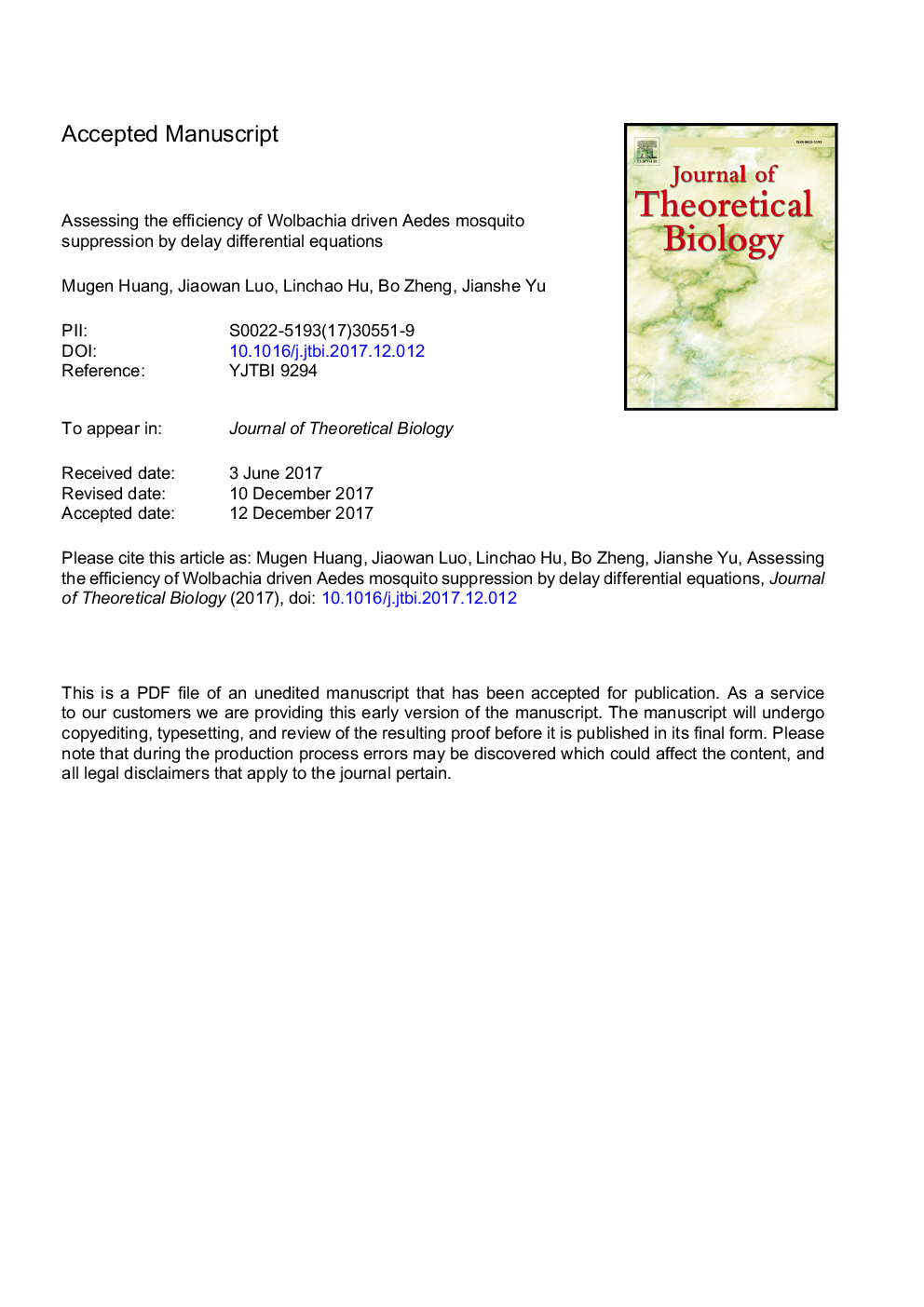| Article ID | Journal | Published Year | Pages | File Type |
|---|---|---|---|---|
| 8876840 | Journal of Theoretical Biology | 2018 | 30 Pages |
Abstract
To suppress wild population of Aedes mosquitoes, the primary transmission vector of life-threatening diseases such as dengue, malaria, and Zika, an innovative strategy is to release male mosquitoes carrying the bacterium Wolbachia into natural areas to drive female sterility by cytoplasmic incompatibility. We develop a model of delay differential equations, incorporating the strong density restriction in the larval stage, to assess the delicate impact of life table parameters on suppression efficiency. Through mathematical analysis, we find the sufficient and necessary condition for global stability of the complete suppression state. This condition, combined with the experimental data for Aedes albopictus population in Guangzhou, helps us predict a large range of releasing intensities for suppression success. In particular, we find that if the number of released infected males is no less than four times the number of mosquitoes in wild areas, then the mosquito density in the peak season can be reduced by 95%. We introduce an index to quantify the dependence of suppression efficiency on parameters. The invariance of some quantitative properties of the index values under various perturbations of the same parameter justifies the applicability of this index, and the robustness of our modeling approach. The index yields a ranking of the sensitivity of all parameters, among which the adult mortality has the highest sensitivity and is considerably more sensitive than the natural larvae mortality.
Keywords
Related Topics
Life Sciences
Agricultural and Biological Sciences
Agricultural and Biological Sciences (General)
Authors
Mugen Huang, Jiaowan Luo, Linchao Hu, Bo Zheng, Jianshe Yu,
